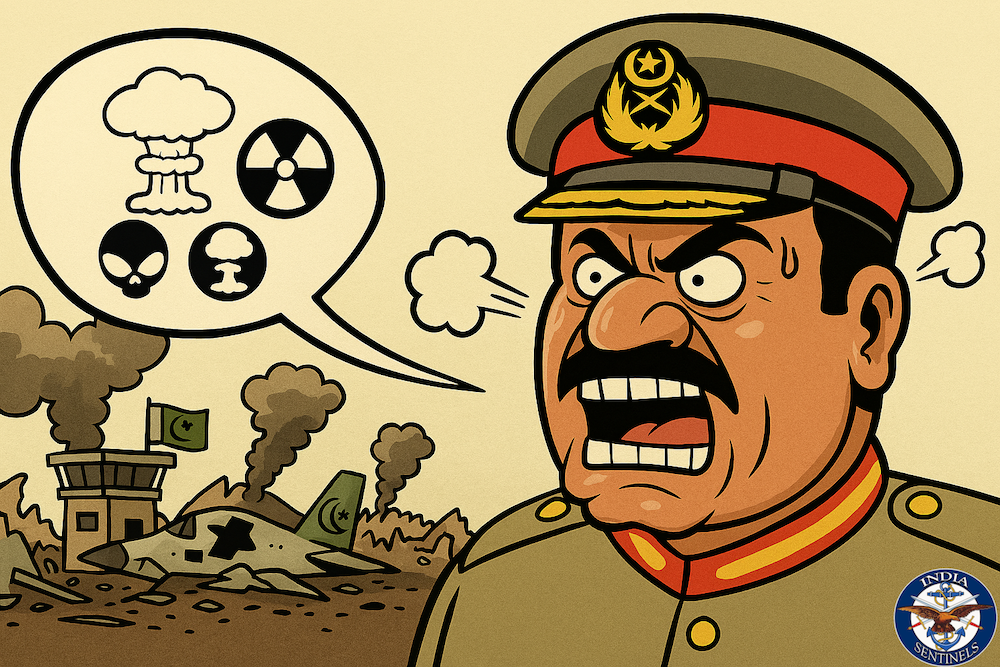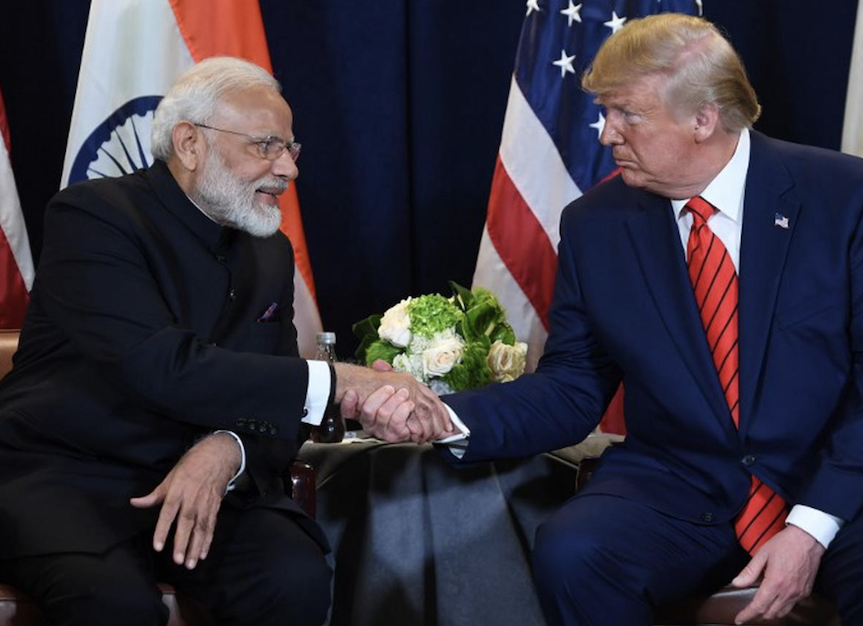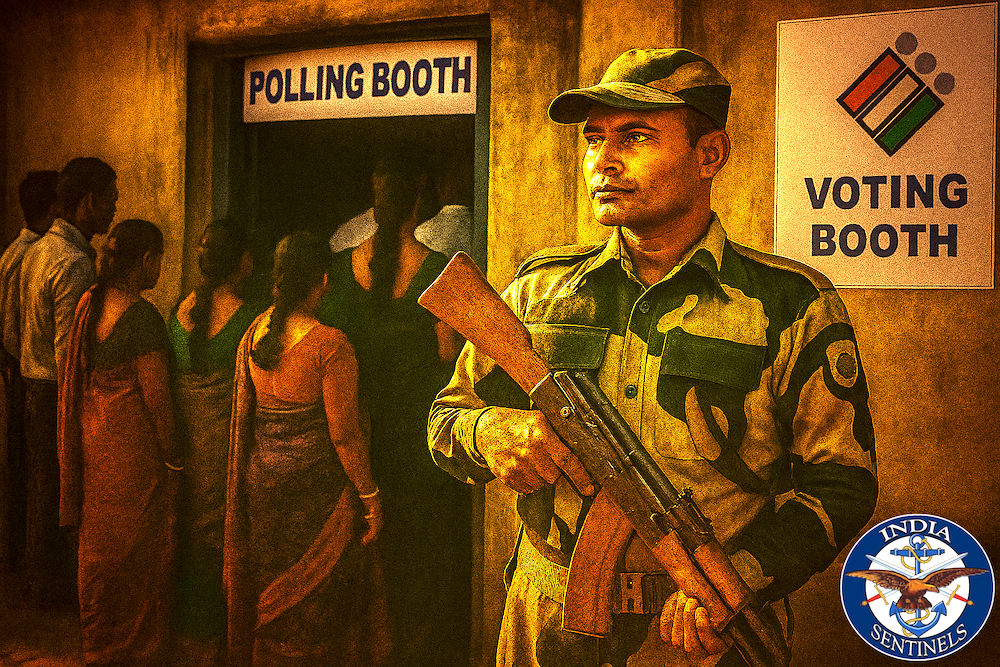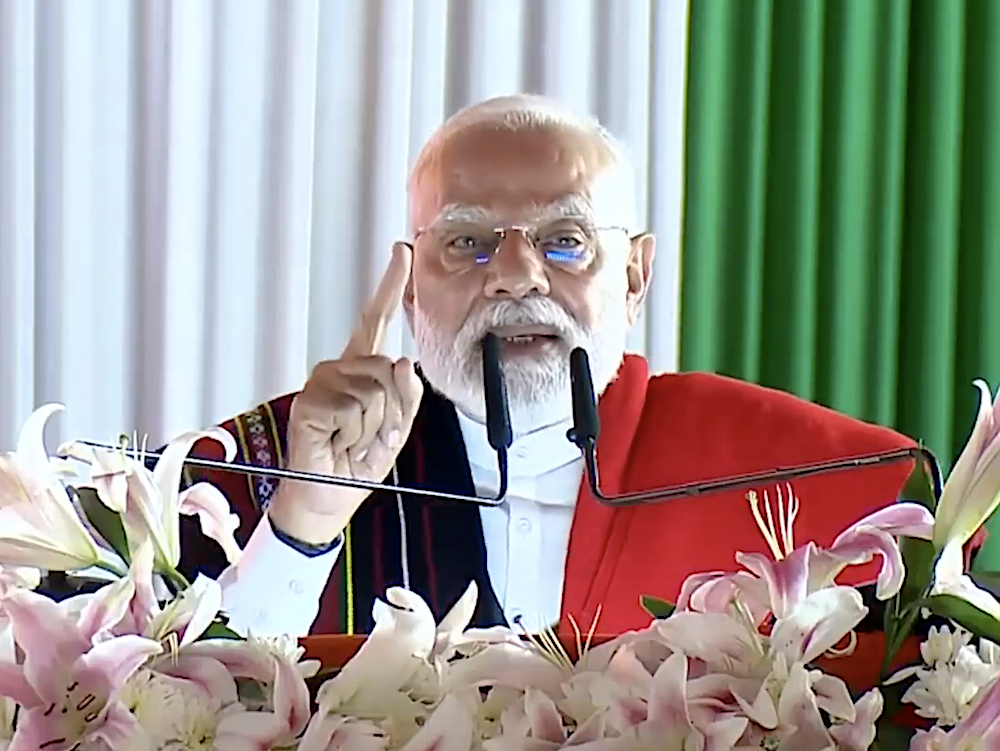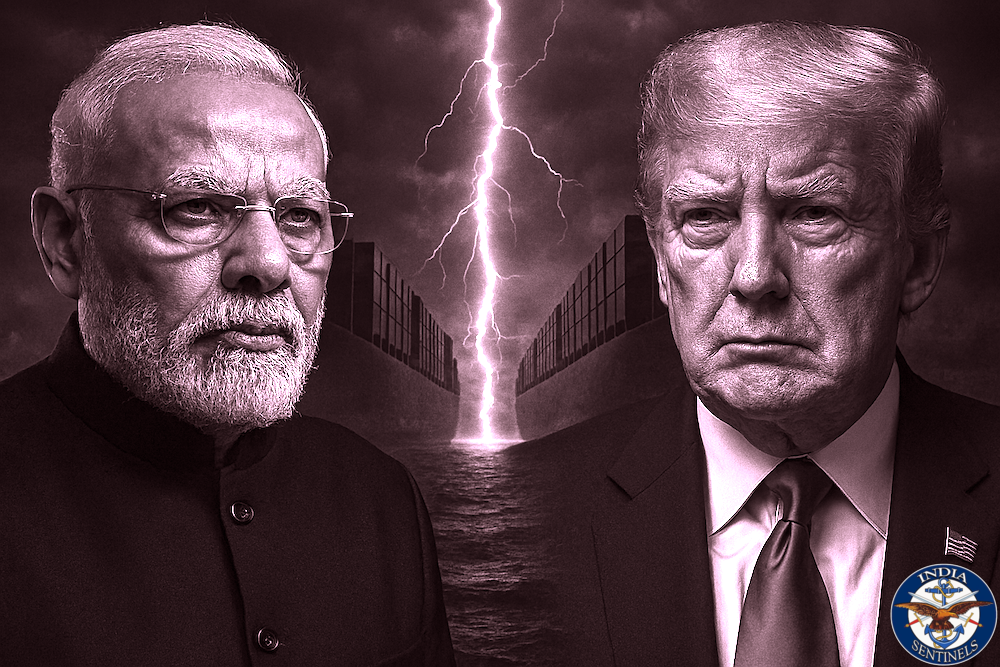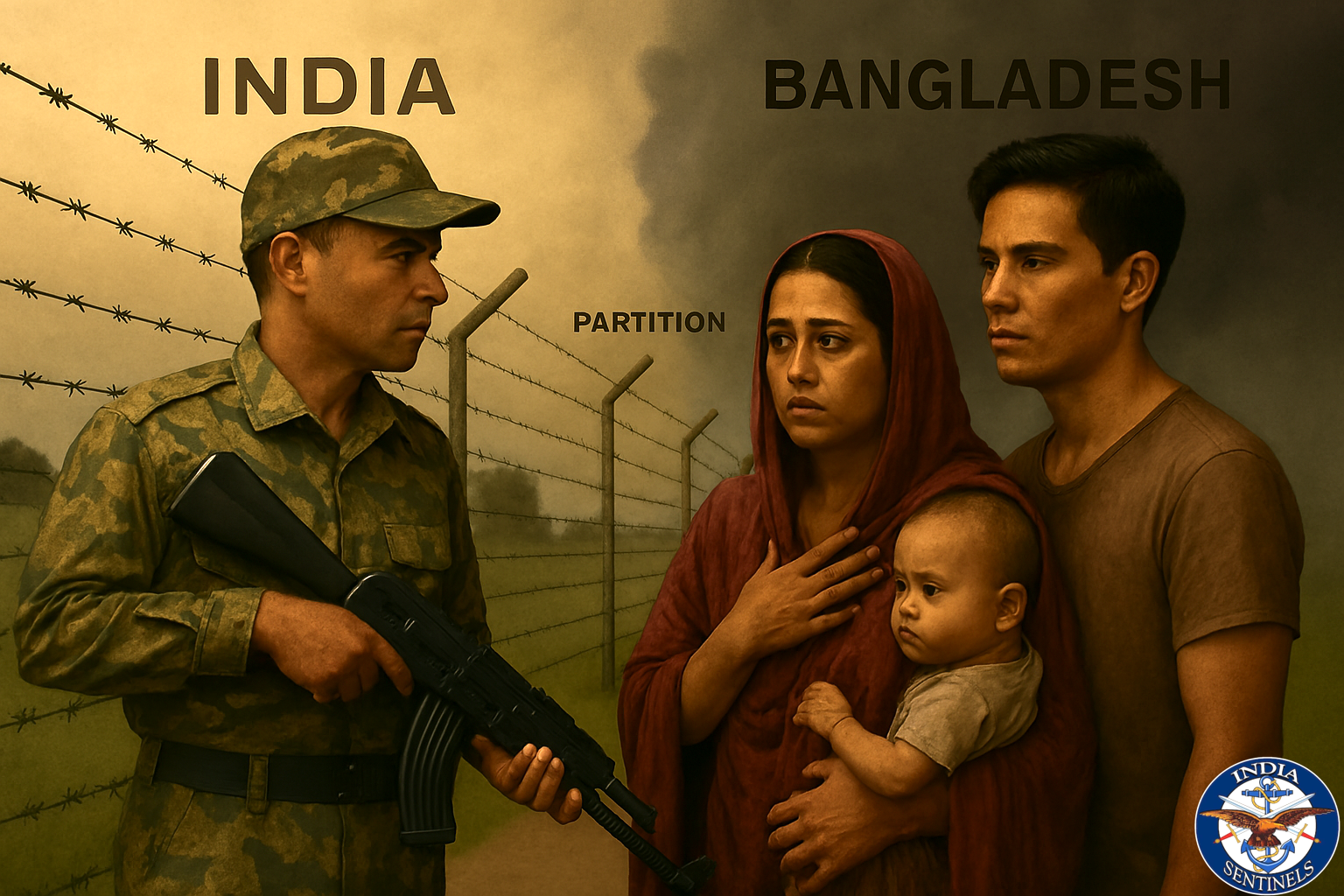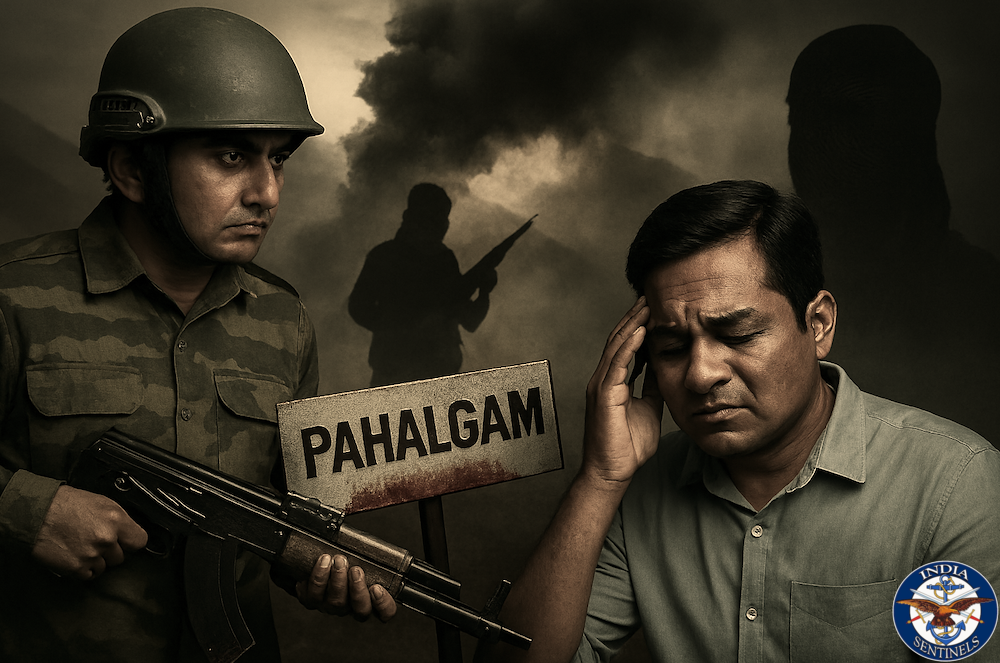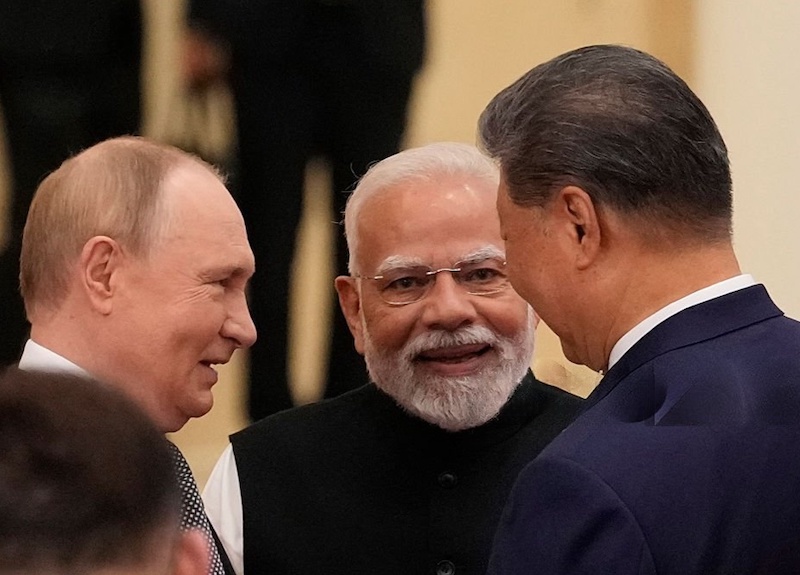 The Supreme Court of India. (File photo)
The Supreme Court of India. (File photo)
With over a million personnel in the Central Reserve Police Force (CRPF), Border Security Force (BSF), Central Industrial Security Force (CISF), Indo-Tibetan Border Police (ITBP), and Sashastra Seema Bal (SSB), these five central armed police forces (CAPFs) represent one of the world’s largest internal security apparatuses. Yet, beneath this impressive facade lies a structural anomaly that has plagued these forces for decades: a fragmented command structure that undermines their operational efficiency and demoralizes their indigenous officer cadre.
Therefore, the time has come for the government to honour the Supreme Court’s landmark judgment of May 23, 2025, which recognized these five CAPFs as “organized Group A services” (OGAS). This ruling mandated sweeping reforms to address the decades-long career stagnation of CAPF cadre officers.
Read also: Border security or border combat? India’s western challenge
Professional Paradox
The Ministry of Home Affairs (Union home ministry) controls these critical security forces through approximately 12,000 indigenous cadre officers supplemented by Indian Police Service (IPS) officers in senior positions. This hybrid structure, while perhaps necessary during the formative years of these forces, has evolved into a professional impediment that defies modern organizational logic.
Consider the irony: CAPF cadre officers are entrusted with India’s most challenging security operations. They spearhead the government’s March 26, 2026, deadline to eliminate left-wing extremism from the country. Border Security Force officers demonstrated exceptional tactical acumen during Operation Sindoor, earning praise from the prime minister, Narendra Modi; the Union home minister, Amit Shah; and the Indian Army leadership for their valiant defence along the Jammu border against Pakistani aggression.
Central Industrial Security Force personnel safeguard India’s critical economic infrastructure – airports, nuclear facilities, and industrial complexes that drive the nation’s growth engine. Indo-Tibetan Border Police jawans patrol the treacherous Himalayan frontiers, while Sashastra Seema Bal guards our porous borders with Nepal and Bhutan. These are not routine policing duties but specialized military-style operations requiring deep institutional knowledge and combat expertise.
Read also: BSF is an armed force, not police, nation must know
Training Mismatch
The fundamental flaw in the current system becomes apparent when examining the professional backgrounds of those expected to lead these operations. IPS officers, trained primarily for civil policing, are inducted into CAPFs after 13–18 years of state-level law-enforcement experience. Expecting them to master the intricacies of border warfare, counterinsurgency operations, and specialized security protocols represents a professional misalignment.
Combat leadership demands intimate understanding of weapons systems, tactical deployment, threat assessment, and rapid decision-making under extreme pressure. These skills cannot be acquired through crash courses or on-the-job learning when lives hang in the balance. The learning curve for IPS officers transitioning to CAPF roles creates operational vulnerabilities at critical junctures.
Moreover, this system forces experienced IPS officers to “start from scratch,” learning basic command and administrative procedures instead of focusing on strategic planning and macro-level security infrastructure development – areas where their seniority should naturally contribute.
Read also: BSF must brainstorm to meet dynamic battle challenges
Government’s Gradual Recognition
The government’s actions over recent years suggest growing awareness of these structural deficiencies. The allocation of inspector general positions reserved for IPS officers has been reduced from 80 per cent to 50 per cent. At the deputy inspector general level, IPS reservation has dropped from 30 per cent to 20 per cent.
Even more telling is the difficulty in filling sanctioned IPS positions. Many posts at the deputy inspector general level remain vacant as IPS officers increasingly decline CAPF postings due to challenging service conditions and remote locations. The government occasionally transfers these positions to CAPF cadre officers as “one-time measures” – a Band-Aid solution that highlights the system’s inherent flaws.
Why the MHA remains reluctant to permanently transfer these positions to CAPF cadre officers defies rational explanation, particularly when the Supreme Court has now provided judicial backing for such reforms.
Read also: How BSF’s ‘offensive defence’ thwarted Pakistan’s designs
Debunking the Coordination Myth
Proponents of the current system often cite state coordination requirements as justification for maintaining IPS presence in CAPFs. This argument crumbles under scrutiny. Ground-level coordination with state police forces typically occurs at the commandant and deputy inspector general levels – positions predominantly held by indigenous CAPF officers.
The Supreme Court itself acknowledged this reality, noting that effective liaison functions are handled competently at these operational levels. Furthermore, CAPF officers routinely coordinate with international counterparts from Pakistan, Bangladesh, Nepal, and Bhutan. They have served with distinction in United Nations peacekeeping missions, where they demonstrated sophisticated diplomatic and operational coordination skills on global platforms.
If CAPF officers can manage complex international engagements, questioning their ability to liaise with domestic counterparts appears both illogical and insulting to their professional competence.
Read also: India’s border-security infrastructure needs more than marginal budget hikes
Human Cost of Institutional Neglect
The current system’s greatest tragedy lies not in its operational inefficiencies but in its human impact. Talented CAPF officers, having dedicated their careers to national security, find themselves trapped in a promotion structure that prioritizes external deputation over indigenous expertise. This institutional discrimination breeds resentment, reduces morale, and drives away many promising officers to other career opportunities.
The 13-year legal battle that culminated in the Supreme Court’s May judgment represents not just a quest for justice but a cry for professional dignity. These officers approached the courts only after exhausting all administrative channels – a damning indictment of the system’s responsiveness to legitimate grievances.
Read also: Attrition in CAPFs – A call for in-depth analysis, proactive measures
Supreme Court’s Clear Mandate
The Supreme Court’s judgment provides an unambiguous roadmap for reform. By recognizing CAPFs as OGAS, the court acknowledged these forces’ unique professional character and operational requirements. The directive to complete the long-overdue cadre review within six months and progressively reduce deputationist positions over two years offers a structured transition plan.
The court’s emphasis on removing stagnation while meeting operational requirements reflects deep understanding of the forces’ professional needs. This judgment represents not judicial overreach but institutional course correction long overdue.
Government’s Counterproductive Response
The government’s decision to file a review petition against this landmark judgment sends troubling signals about its commitment to the modernization of the security forces. Continuing IPS deputations despite explicit Supreme Court directions to reduce them suggests institutional inertia resistant to necessary change.
Read also: Command duality in border guarding is against national security
This approach risks damaging the government’s credibility with its own security forces at a time when India faces complex threats across multiple frontiers. From the line of actual control tensions with China to persistent insurgency challenges in the northeast and ongoing counterterrorism operations, India’s security environment demands optimally configured and motivated forces.
The Path Forward
National security considerations alone should compel immediate implementation of the Supreme Court’s verdict. The current fragmented structure weakens command cohesion, reduces operational effectiveness, and wastes human resources when India can ill-afford such luxuries.
A homogeneous CAPF cadre structure would enhance combat preparedness, improve interagency coordination, and boost morale across all ranks. Officers confident in their career progression are more likely to take calculated operational risks and innovate tactically – essential qualities for modern security challenges.
The transition need not be abrupt or disruptive. The apex court’s two-year timeline allows systematic phase-out of deputationist positions while ensuring continuity of operations. Current IPS officers in CAPF roles could complete their tenures while new appointments favour indigenous cadre officers.
Read also: Implement professional protocol for top posts in border-guarding CAPFs
Beyond Compliance
Implementing the Supreme Court’s judgment represents more than legal compliance – it embodies strategic wisdom. Modern security challenges require dedicated, specialized forces led by officers who understand their unique operational environments. The police-military divide that characterizes global security architectures exists for sound professional reasons.
India’s CAPFs occupy a unique position in this spectrum, combining military-style operations with law-enforcement responsibilities in conflict zones/disturbed areas within the country. This hybrid role demands equally specialized leadership – a requirement best met by officers who have grown within these institutions and understand their ethos, capabilities, and limitations.
Read also: High time govt empowers BSF cadre officers lead force at highest level
Moment of Reckoning
The Supreme Court’s recognition of CAPFs as OGAS validates what security professionals have long argued: these forces deserve institutional structures commensurate with their critical responsibilities. The judgment offers an opportunity to rectify historical anomalies and build more effective, motivated security forces.
Continued resistance to these reforms risks not only legal consequences but operational deficiencies that could prove costly when national security is tested. The choice before the government is clear: embrace necessary modernization or perpetuate structural flaws that undermine the very forces entrusted with India’s security.
Read also: IPS officers vs CAPF officers – Unseemly tug of war
For the million-plus personnel serving in India’s CAPFs, and for the nation they protect, the time for half-measures has passed. Justice delayed in this context is not merely justice denied – it is national security compromised.
The government must demonstrate the same courage in implementing institutional reforms that it expects from its security forces in defending the nation. The Supreme Court has shown the way; political will must now pave the path forward.
Disclaimer: The views expressed in the article are the author’s own and don’t necessarily reflect the views of India Sentinels.
Follow us on social media for quick updates, new photos, videos, and more.
X: https://twitter.com/indiasentinels
Facebook: https://facebook.com/indiasentinels
Instagram: https://instagram.com/indiasentinels
YouTube: https://youtube.com/indiasentinels
© India Sentinels 2025-26

